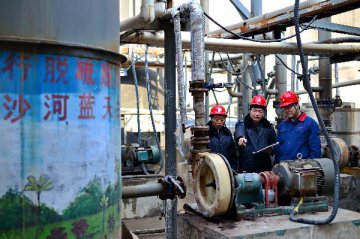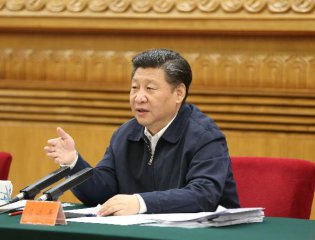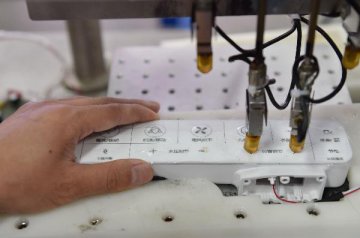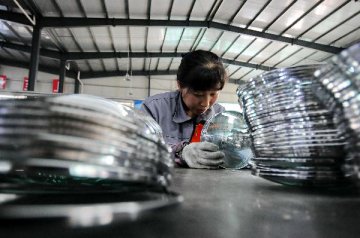
Local “two sessions”, namely People’s Congress and Political Consultative Conference of provinces and municipalities convened recently mapped out the tasks and targets of supply-side reform in 2017.
Journalist of the Shanghai Securities News (SSN) found that supply-side reform is still one of the key words in the government work reports of each province and municipality. Specifically, in order to made substantial progress in the five key tasks, i.e. “cutting overcapacity, destocking, deleveraging, reducing costs and identifying growth areas”, local regions have plotted some new actions.
Key word of de-capacity: clean “zombie enterprises”
With the prices of steel and coal going up and profitability of enterprises improving, the pressure of de-capacity has increased in 2017. But according to the targets of de-capacity released by relevant provinces, greater efforts will be made in this respect.
Compared with last year, the specific de-capacity goal of steel and coal of various regions has not been reduced. For example, Shanxi Province indicates that it will shut down coal capacity of about 20 million tons; Shaanxi Province plans to over fulfill the annual task by closing coal capacity of 29.34 million tons; Hubei expressly indicates that it will close all the coal producing enterprises within two years.
Hebei Province proposes to reduce the steelmaking capacity by 15.62 million tons to 16.24 million tons. This target approximates that of last year. Though Jiangsu Province and Shandong Province have not yet released the de-capacity target for 2017, industry insiders generally believe that this two major steel producing provinces will further cut excessive capacity.
In addition to formulate specific targets, to clean zombie enterprises and strictly obsolete outdated steel production capacity are also key emphases of de-capacity for each region.
For instance, Hebei Province proposes to shut down four zombie enterprises in the steel industry; Beijing will carry out special projects on unprofitable enterprises, and support the classified disposal of more than 50 zombie enterprises
Guangxi Zhuang Autonomous Region will set up a data base of zombie enterprises. It will introduce method for job transfer, accelerate the clearing of closed enterprises and set up disposal mechanism for non-state-owned zombie enterprises. Hubei Province aims to research de-capacity in the areas such as thermal power and strictly investigate and clear outdated steel capacity.
“Both the government and enterprises will emphasize the cleaning of outdated steel capacity and illegal and outdated capacity, as these are important contents of de-capacity and consolidation of the market environment,” Xu Xiangchun, analyst with www.mysteel.com, told the journalist of SSN in an interview.
The target of steel de-capacity of the whole nation was 45 million tons last year. Xu says that the target this year will be no less than that of last year. In particular, to clean outdated steel capacity provides a cut-in point to step up de-capacity of steel.
Key word of deleveraging: debt-for-equity swap
In comparison with last year, contents in local government work reports related to deleveraging have increased this year. Journalist of the SSN found that to conduct market-oriented debt-for-equity swap and strengthen equity financing will be key policies of local regions on deleveraging.
Chongqing Municipality has made detailed descriptions in the government work report: promote debt, asset and corporate restructuring based market-oriented and legal manners, to transfer off-balance sheet assets into balance sheet, clean outdated capacity and improve the efficiency, and reduce the leverage ratios of enterprise. To conduct market-oriented debt-for-equity swap, support banks to package and transfer non-performing assets to asset management companies, encourage asset management companies such as Yukang Asset Management to participate in restructuring of inefficient assets and disposal of risky assets. Strengthen centralized management of enterprise capital, help enterprises to replace high-cost debt, optimize debt structure and ease burden of enterprises through innovative financing tools such as assets securitization and equity investment fund.
Guangxi also proposes to prevent risks of bonds issued by key enterprises, launch implementation plans on debt-for-equity swap for enterprises. Tianjin will support marketization of enterprises, legalized debt-for-equity swap, strengthen equity financing and standardize financing by governmental financing platforms. Shanxi proposes to steadily carry forward debt restructuring of enterprises, expand equity financing and financing with account receivables, and establish coordinated mechanism for corporate debt restructuring and non-performing assets.
Many local governments have mentioned debt replacement. For example, Jilin Province proposes to actively and steadily advance deleveraging, include all the governmental debts into the budget management and strive to obtain national replacement bonds of 65.35 billion yuan. Guangxi proposes to strengthen and perfect governmental debt management system, and increase replacement of existing governmental debts.
“So far, deleveraging of enterprises has achieved partial results. Therefore, deleveraging in 2017 will primarily concentrate on local governments,” says Zhang Junhua, chief economist with Morgan Stanley Huaxin Securities.
Zhang says that due to the impacts of various factors such as slowing down economic growth and reduced tax and revenue result from real estate adjustment, local governments face fiscal difficulties. But the repayment pressure on matured debts still has not been mitigated. In light of the downside pressure of economic growth in 2017, fixed asset investment requires support from local governments. That means only when the issues of existing debts and additional debts of local governments are well handled, could the prevention of financial risks and stabilizing growth be given equal consideration.
New highlights: agricultural supply-side reform
Journalist of the SSN also found from public information of different regions that in addition to the aforesaid five major tasks, agricultural supply-side reform and boosting real economy are also new highlights of local economic policies.
Local regions also include agricultural supply-side reform into this year’s governmental work reports. Specifically, their policies emphasize improving the quality of agricultural products and deepening of rural reform.
Hebei emphasizes standardized production of agricultural products, brand building and supervision of quality safety. Jilin intends to deepen rural comprehensive reform: promote the pilots of rural land rights confirmation and certification in the whole province, advance rural collective property rights system reform, deepen grain purchase and storage system reform and push forward agricultural reclamation reform.
In addition, local government work reports show that various regions aim to boost real economy. Gansu Province and Shaanxi Province explicitly indicate that to boost real economy will be the key tasks of supply-side structural reform. The key emphases of work of local regions will mainly revolve around transformation and upgrading of traditional competitive industries and cultivating emerging industries.
Translated by Adam
























Latest comments